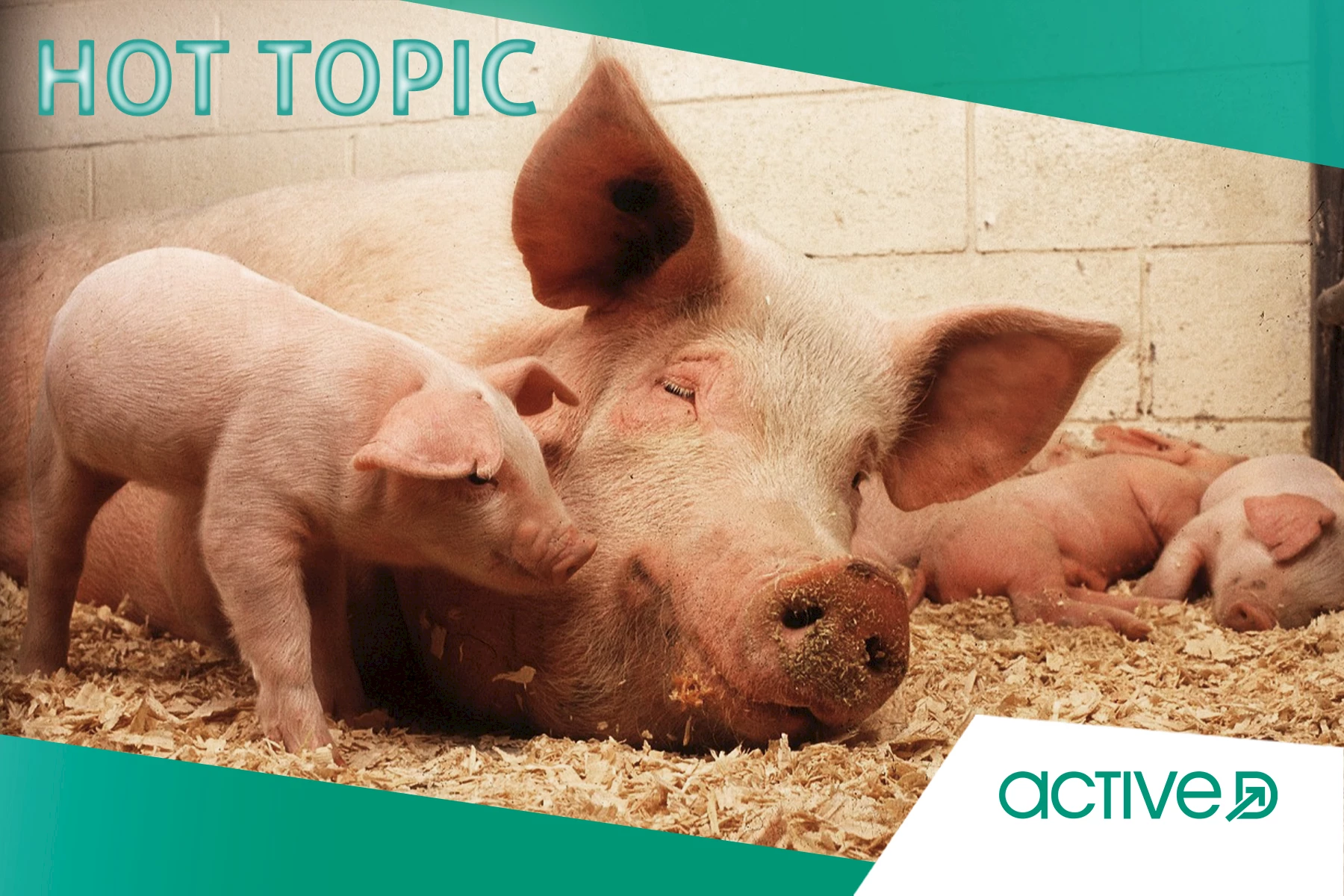
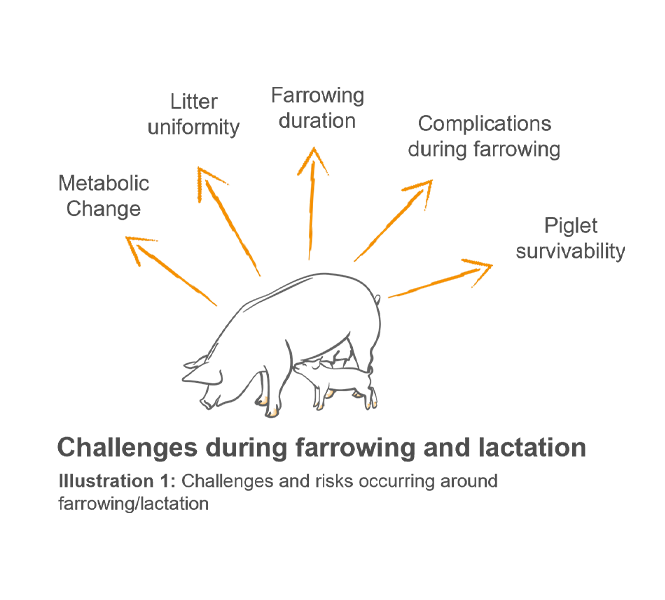
Challenges of Farrowing and Lactation: Nutritional Demands and the Role of Calcium for Sow and Piglet Health
Farrowing is a demanding phase in a sow's life, closely followed by the equally challenging period of lactation, both of which place significant strain on the metabolism. Around farrowing, the sow undergoes a rapid metabolic shift from a “resting” to a “high-performance” state, driven by hormonal changes and a sudden increase in energy and nutrient needs, including calcium, phosphorus, and vitamin D3.This heightened demand supports the onset of colostrum and milk production, often requiring the sow to draw on its own calcium and fat reserves. Multiparous sows may experience exhaustion after difficult farrowing, often linked to calcium deficiency, which is critical for uterine muscle contractions. The longer the farrowing process, the higher the likelihood of stillborn piglets.
A lack of calcium can reduce muscle contractions, slowing the passage through the birth canal and increasing the number of stillborn piglets. Additionally, the farrowing process can present various challenges for sows, such as stress, health complications, or dystocia. Therefore, providing proper care for the sow during farrowing and lactation is crucial for successful piglet production. This article focuses on the importance of vitamin D and calcium supplementation before and after farrowing
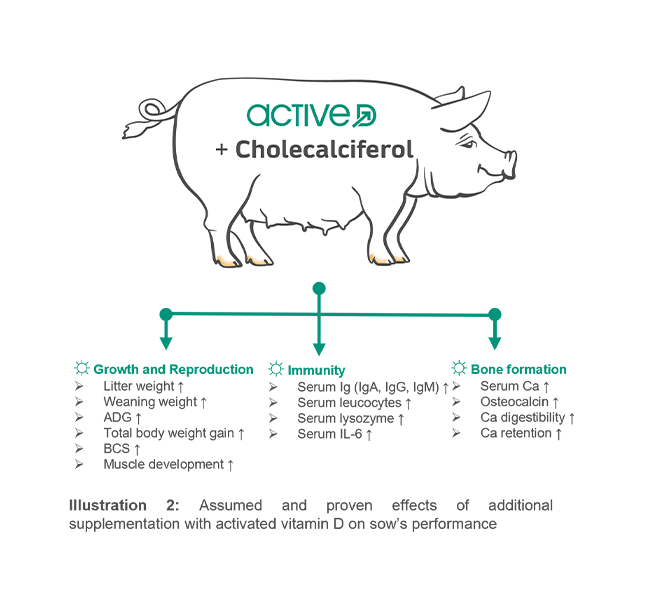
Powering Health: Why Active Vitamin D3, Calcium, and Phosphorus Matter
Vitamin D is an essential fat-soluble vitamin that plays a crucial role in calcium and phosphorus metabolism and supports the immune system. Cholecalciferol, the primary dietary source of vitamin D, is biologically inactive in animals and must undergo sequential hydroxylation. First, it is converted to 25-hydroxycholecalciferol (Calcidiol) in the liver and then to 1,25-dihydroxycholecalciferol (Calcitriol) in the kidneys.Calcitriol, the active hormonal form of vitamin D3, exerts its effects through a nuclear receptor, enabling a range of functions in the sow (see Illustration 2).
Active D has a unique feature: it contains calcitriol-glycosides, meaning calcitriol is not available in its free form and must be released by endogenous enzymes for metabolic use.
This provides a slow release and high stability against degradation, heat, and storage, making it ideal for targeted application in animal feeding. This is particularly beneficial for animals with impaired vitamin D metabolism or damage to organs involved in metabolic processing, as it ensures a consistent vitamin D supply during periods of stress or high demand.

(Continued Page 1) Calcitriol glycosides can be used in addition to or as a partial replacement for cholecalciferol in premixes, offering a high safety margin and practical advantages for animal feeding. Unlike cholecalciferol and calcidiol, calcitriol does not accumulate in soft tissues such as fat and muscle and has a shorter half-life of only 16–24 hours. Additionally, calcitriol has natural inactivation mechanisms, as it is excreted as calcitroic acid when not needed.
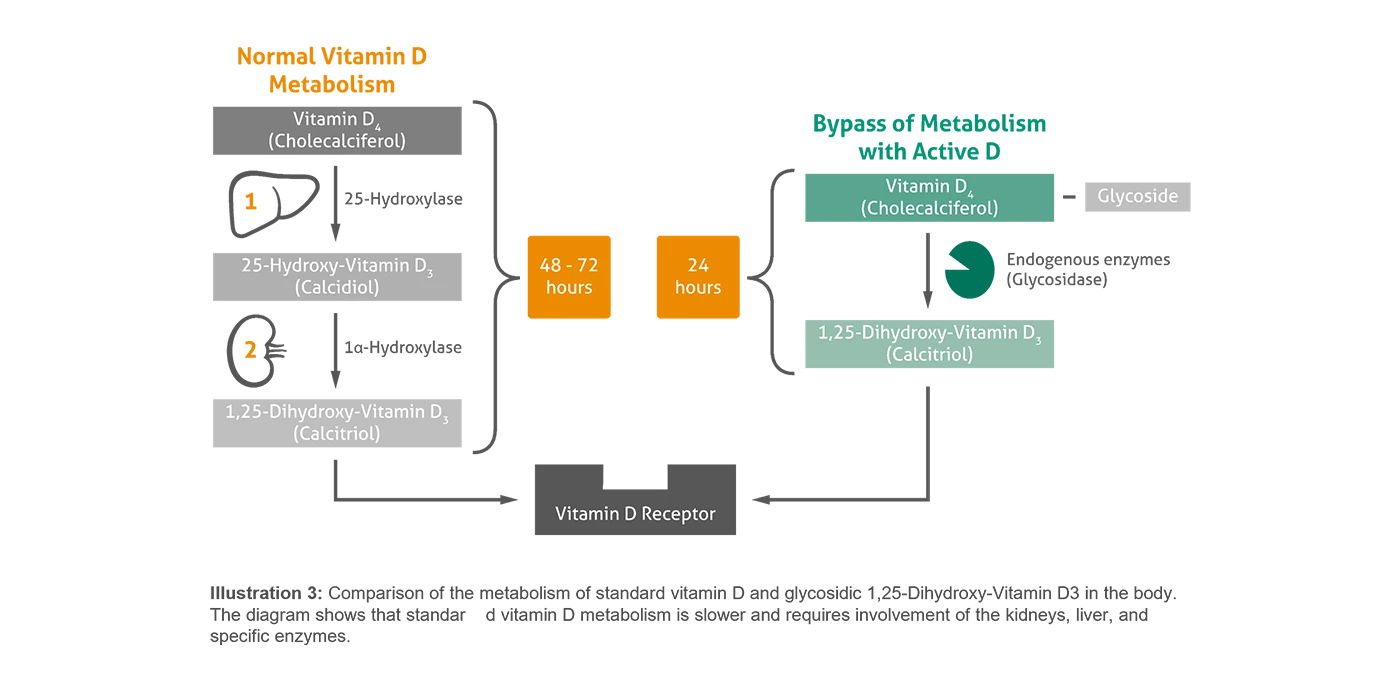
Boosting Lactation Success with Active D
Multiparous sows often experience exhaustion due to challenging farrowing, with calcium deficiency frequently contributing to the problem, as calcium is essential for uterine muscle contractions. The rule of thumb is that the longer the farrowing process, the higher the likelihood of stillborn piglets. Reduced muscle contractions from calcium deficiency slow movement through the birth canal, increasing the risk of stillbirths. Calcitriol glycosides enhance calcium mobilization, helping to support muscle function. Additionally, fatigued sows may experience delayed colostrum and milk let-down as well as reduced appetite.
When it comes to milk production, the estimated calcium and phosphorus requirements for lactating sows are largely driven by their milk output (NRC, 2012). High-producing sows with large, fast-growing litters experience a significant increase in calcium and phosphorus needs. Since calcium is a limiting factor for milk and colostrum production, adding calcitriol glycosides can help maintain consistent milk production. Active D in lactation feed has proven to be particularly effective in addressing these increased demands. Lactation feed is typically introduced 4–7 days before farrowing and continues until the piglets are weaned, around 21–28 days after farrowing. A supplementation concept is illustrated below.


The successful use of Active D in lactation feed - A trial at the University of Milan
In 2024, a trial was conducted on lactating sows at the University of Milan, where Active D (at 400 mg/kg and 600 mg/kg) was added to cholecalciferol (1,800 IU D3/kg) in two treatment groups, while the control group received only cholecalciferol (1,800 IU D3/kg) (Table 1). Active D was included in the lactation feed starting a few days before farrowing. The treatment groups showed a significant positive effect, with a shorter farrowing period and improved production parameters for both sows and piglets.

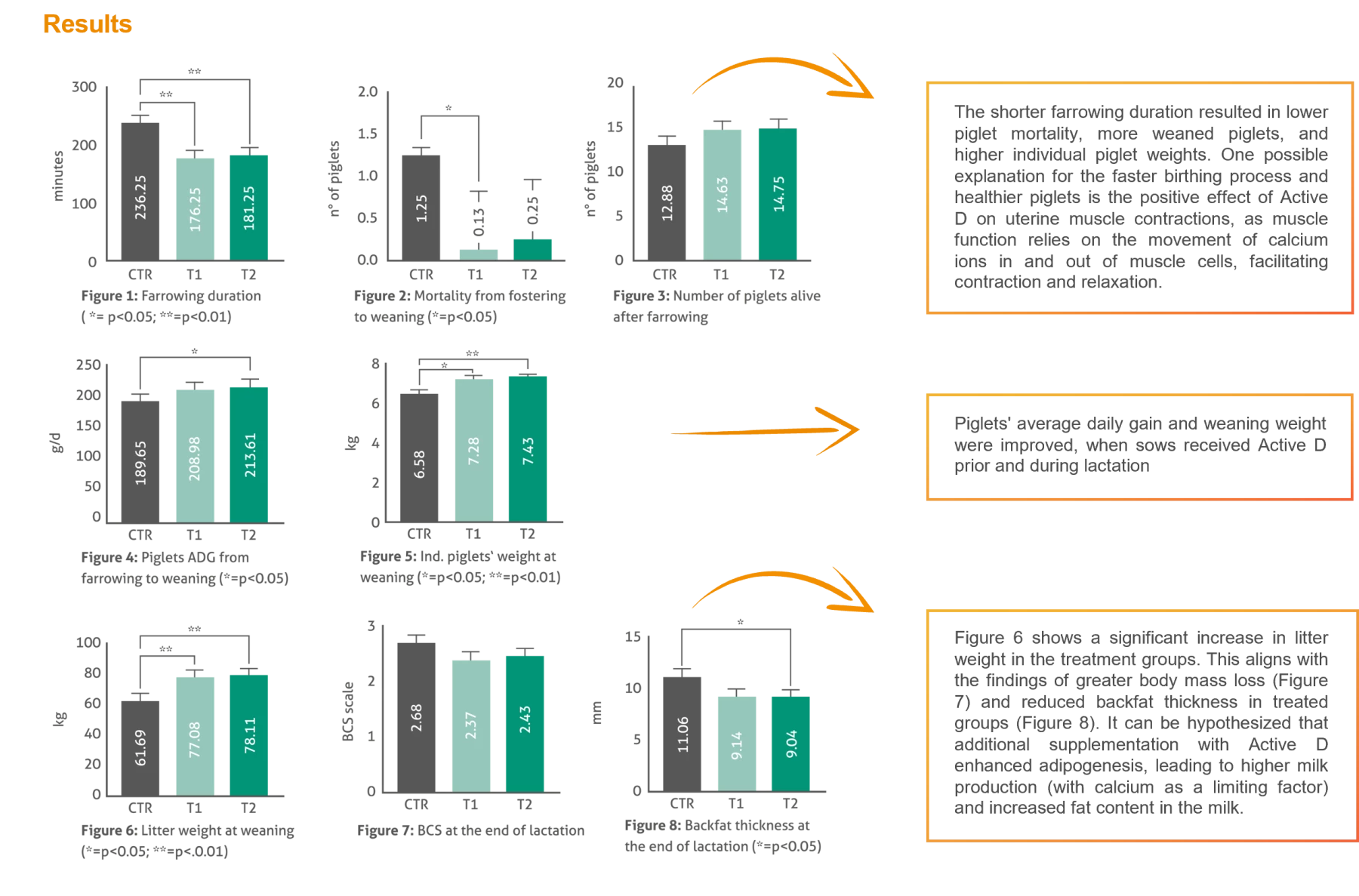


Murat Devlikamov studied Agricultural Sciences at the University of Giessen, Germany, and did his Master’s thesis on broiler nutrition. At Phytobiotics, he is the Product Manager of the plant-based product Active D. Murat conducts scientific research on targeted vitamin D supply to create practical solutions for animals in periods of high metabolic challenge.
Download the pdf version of the Hot Topic written by our expert Murat Devlikamov, Product Manager Active D.
Download the HOT TOPIC (PDF) here >>
Póngase en contacto con nuestros expertos o envíenos un mensaje. Nos pondremos en contacto con usted lo antes posible.